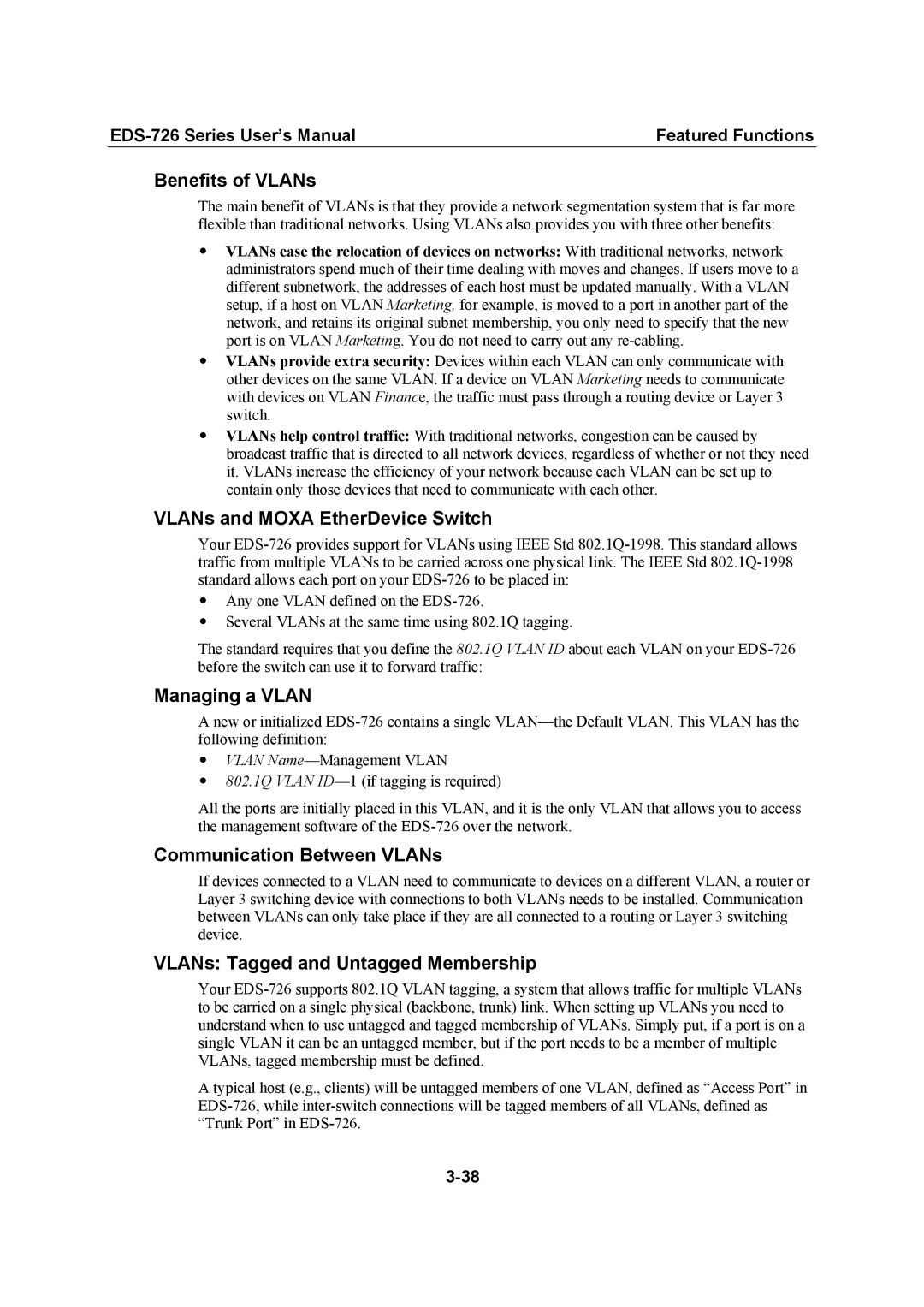Featured Functions |
Benefits of VLANs
The main benefit of VLANs is that they provide a network segmentation system that is far more flexible than traditional networks. Using VLANs also provides you with three other benefits:
yVLANs ease the relocation of devices on networks: With traditional networks, network administrators spend much of their time dealing with moves and changes. If users move to a different subnetwork, the addresses of each host must be updated manually. With a VLAN setup, if a host on VLAN Marketing, for example, is moved to a port in another part of the network, and retains its original subnet membership, you only need to specify that the new port is on VLAN Marketing. You do not need to carry out any
yVLANs provide extra security: Devices within each VLAN can only communicate with other devices on the same VLAN. If a device on VLAN Marketing needs to communicate with devices on VLAN Finance, the traffic must pass through a routing device or Layer 3 switch.
yVLANs help control traffic: With traditional networks, congestion can be caused by broadcast traffic that is directed to all network devices, regardless of whether or not they need it. VLANs increase the efficiency of your network because each VLAN can be set up to contain only those devices that need to communicate with each other.
VLANs and MOXA EtherDevice Switch
Your
yAny one VLAN defined on the
ySeveral VLANs at the same time using 802.1Q tagging.
The standard requires that you define the 802.1Q VLAN ID about each VLAN on your
Managing a VLAN
A new or initialized
yVLAN
y802.1Q VLAN
All the ports are initially placed in this VLAN, and it is the only VLAN that allows you to access the management software of the
Communication Between VLANs
If devices connected to a VLAN need to communicate to devices on a different VLAN, a router or Layer 3 switching device with connections to both VLANs needs to be installed. Communication between VLANs can only take place if they are all connected to a routing or Layer 3 switching device.
VLANs: Tagged and Untagged Membership
Your
A typical host (e.g., clients) will be untagged members of one VLAN, defined as “Access Port” in
